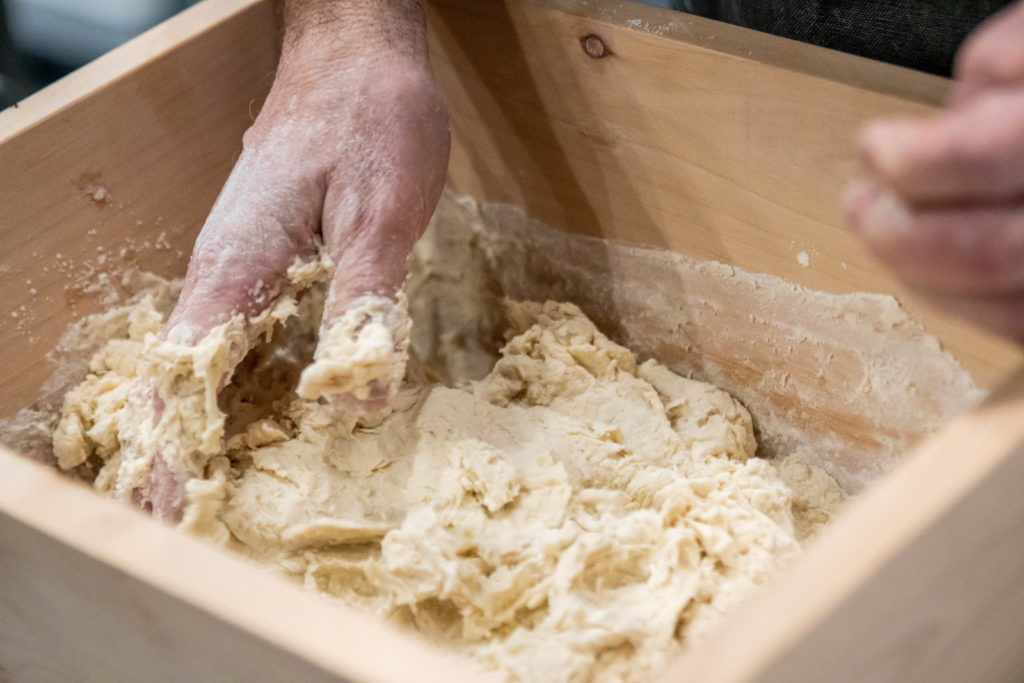All You Need To Know About Neapolitan Pizza Dough
Nowadays more pizza is eaten per capita in the United States (46-slices per year) than it is in Italy, thanks to delivery “pizza.” As of December 2017, the art of Neapolitan pizza-making was added to UNESCO’s Representative List of the Intangible Cultural Heritage of Humanity. “Pizzaiuoli (pizza-makers) are a living link for the communities concerned, ” says UNESCO (the United Nations Educational, Scientific and Cultural Organization). The European Community granted “Pizza Napoletana” STG or Specialty Tradition Guaranteed status to distinguish it from non-authentic pizzas. The full decree can be read here.

Pizza Napoletana is the most widely reproduced or copied of all pizza types. Authentic Pizza Napoletana is known for being very tender, light, and moist at the same time. It cooks for only 90 seconds in an 800F degree oven and needs 58-65% hydration. Its ingredients must be Italian and coming from a specific area such as Agro-Sarnese-Nocerino where San Marzano tomatoes are grown. Pizza Napoletana is always finished with extra-virgin olive oil and fresh basil. For more information on the official guidelines of Vera Pizza Napoletana, click here.
VIDEO
Here are the 4 items that we recommend mastering to make great Neapolitan-style dough:
1. Ingredients
Always make sure that the ingredients are top quality, comply with AVPN guidelines, and work best in your business. The recipe is here.
The definitions of the 4 ingredients include:

Flour
In addition to texture, varying amounts of gluten in the dough will also play a role in its elasticity and the time it takes to ferment. Flours with high levels of gluten absorb more water and produce a strong and tough dough with a longer leavening time. Lower gluten flours absorb less water and rise quickly.
Here at Pizza University and Culinary Arts Center, we prefer to use Caputo brand Pizzeria 00 Flour for its medium protein content that works well for longer. We feel that this works best with the 62% hydration and long fermentation in our Neapolitan pizzas.

Yeast
According to STG guidelines, compressed solid yeast, biologically produced, soft and beige in color, with an insipid taste and low degree of acidity must be used in authentic Pizza Napoletana making. Yeast must be purchased in packages ranging from 25 to 500 grams. Instant yeast may also be used.

Water
Slightly acidic water (with a pH a little below 7) is ideal in pizza making. The water must be clean and free of gas, microorganisms, parasites, or chemical substances that present a health risk.

Salt
Sea salt must be used. This type of salt is produced during the evaporation of ocean or lake saltwater with little processing which leaves behind some of its trace minerals.
2. Mixing

If possible, use a traditional wooden box called a madia to hand mix dough – or use a mixer. Keep in mind that different water temperatures are used for different types of mixing. Hand mixing dough does not heat it up too much, so water can be 74F degrees. When using an industrial electric mixer, however, it is important to use cooler water that will not overheat the dough.
For commercial preparations, the Marra Forni Forked Mixers are best because they prevent the dough from heating up. Our resident instructor Felice Colucci recommends starting with half of the flour and then adding a little at a time until we reach a 62% hydration. For every 1 kg of water, for example, you would use 1.6 kg of flour. Chef Felice always prefers using percentages in his recipes, as is done in Naples, so that if one ingredient needs to be changed, the recipe is still accurate.
3. Kneading
Kneading is a crucial step because it enables you to incorporate air in the dough. If done pretty consistently, it should take approximately 5 – 7 minutes during the first knead.
4. Resting
Once the dough is finished being kneaded – it is important to let it rest for 4-5 minutes which helps combat resilience. After this, it is kneaded for an additional minute or two which makes it elastic and smooth. After that, the dough is covered and it gets a final rest of 8 hours. After this, the dough is ready to be shaped.

To learn more about Neapolitan pizza, read Learning from a Maestro: Enzo Coccia’s Neapolitan Pizza Traditions.
Recipe:
Flour 1.6 Kg
Water 1 liter
Salt 45 gr
Dry yeast (based on temperature and humidity) 1gr

